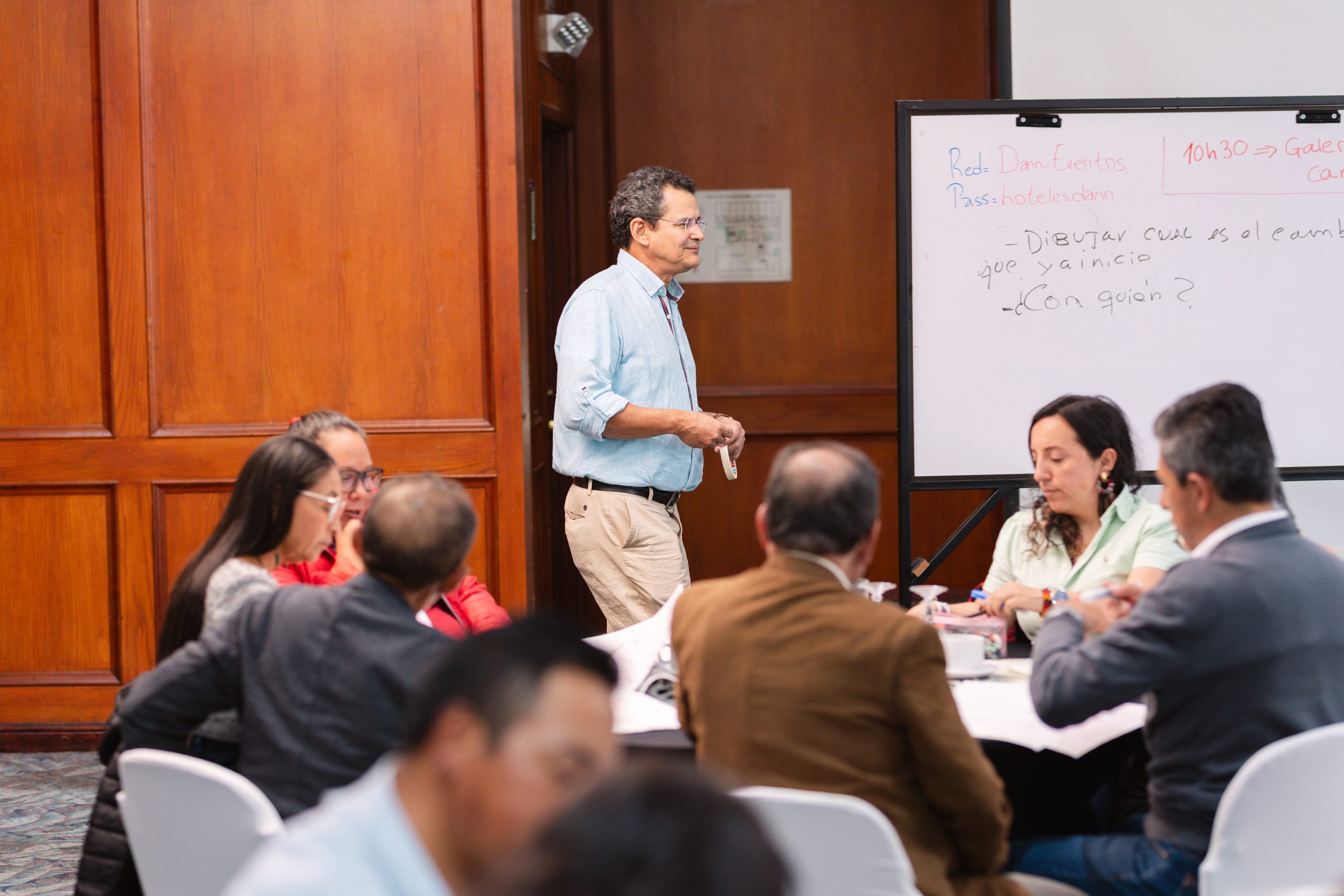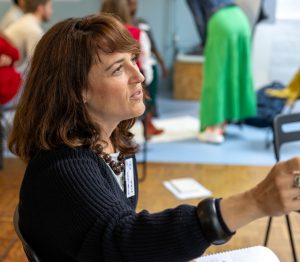So, how do you design a solid, engaging learning experience without leaning on slides? Our seasoned facilitator Myriam has three key ingredients to share.
1. Start with the knowledge already in the room
Knowledge doesn’t only live in books, studies, or the facilitator’s head. Every participant comes with their own experiences, insights, and skills. When you start from their reality, you keep people motivated and invested. They feel seen and heard.
Instead of seeing participants as empty vessels to be filled, recognize that they already bring valuable knowledge and experiences to the table. Real transformation happens when these insights are shared, connected, and built upon. As a facilitator, your role is to ask open questions, create space for dialogue, and celebrate diverse perspectives — guiding a collective journey of discovery rather than standing as the sole expert.
2. Stay flexible and adapt in the moment
Even with the best preparation, you can’t predict everything that will unfold in a training session. A fixed script might feel safe, but it can also keep you from responding to what truly matters in the room.
When you step away from slides, you create space to adapt. Maybe a participant raises a challenge that sparks an unexpected but vital discussion. Maybe a group activity reveals a skill gap you didn’t plan for. Staying flexible allows you to seize these moments and shift direction or dig deeper where it matters most.
Think of it like navigation: you know the destination (your learning objectives), but there are many routes to get there. Sometimes a detour is exactly what makes the journey richer.
3. The power of visualization
One of Myriam’s favorite tools is drawing — simple, hand-made visuals created on the spot. No polished graphics, no perfect diagrams. Just paper, colored markers, and a willingness to sketch as you go.
Why does this work so well?
- It forces you to simplify complex ideas and get to the essence.
- It creates a shared, evolving picture that grows along with the conversation.
- It shows vulnerability. Those rough sketches show you don’t have to be perfect – which invites everyone to jump in and add their own strokes.
During a training with the SASi-SPi project in Colombia, Myriam, together with Humberto, used simple drawings to capture the group’s journey. In the final session, she sketched a child jumping into water with a big SPLASH — a playful way to show how their insights would spread. The image sparked excitement and gave the group a shared sense of momentum and purpose. They now even use the SPLASH drawing in their own sessions!
Brining it all together
Training beyond PPT is about letting go of control and opening up to what unfolds between facilitator and participants. It’s about co-creating knowledge, embracing flexibility, and making ideas visible and tangible.
So, next time you’re tempted to start with a slide deck, pause for a moment. Grab a marker instead. Listen deeply. Trust the process. You might just discover that the best learning happens not on a screen but in the messy, colorful, shared space between people!


